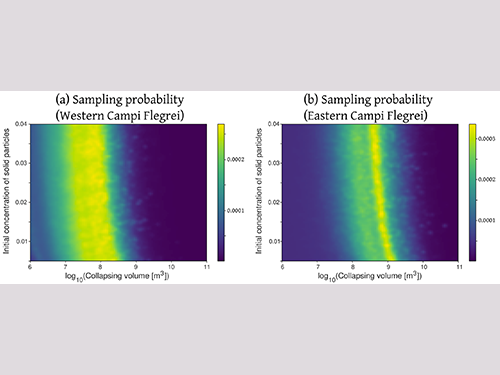Calibration strategies of PDC kinetic energy models and their application to the construction of hazard maps

Aravena A., A. Bevilacqua A., M. de’ Michieli Vitturi, T. Esposti Ongaro, A. Neri, R. Cioni (2022).
Bulletin of Volcanology, 84, https://doi.org/10.1007/s00445-022-01538-8
Abstract
The availability of computer tools able to describe the behavior of pyroclastic density currents (PDCs) with uncertainty quantification is of primary importance for the assessment of volcanic hazard. A common strategy to assess the intrinsic variability of these phenomena is based on the analysis of large sets of numerical simulations with variable input parameters. The use of models fast enough to allow for a large number of simulations, such as the so-called kinetic energy models, is thus advantageous. Due to the sensitivity of kinetic energy models to poorly constrained input parameters, the definition of their variation ranges is a critical step in the construction of hazard maps and a numerical calibration becomes necessary. We present a set of reproducible and structured calibration procedures of numerical models based either on a reference deposit or on the distribution of runout distance or inundation area of documented PDCs. In the first case, various metrics can be adopted to compare the model results with the reference PDC deposit (root mean square distance, Hausdorff distance, and Jaccard index), facilitating the development of scenario-based hazard assessments. Calibrations based on the distribution of runout distance or inundation area allow the construction of probabilistic hazard maps that are not conditioned on the occurrence of a specific scenario, but rather reflect the variability of the documented PDCs during the time window considered. Importantly, our calibration strategies allow one to set the input parameters considering their potential statistical dependence. These procedures have been implemented on the user-friendly versions of two kinetic energy models: ECMapProb 2.0 and BoxMapProb 2.0, whose functionalities are presented for the first time in this paper. The different calibration strategies and the functionalities of the two programs are illustrated by considering three case studies: El Misti (Peru), Merapi (Indonesia), and Campi Flegrei (Italy).


Devi effettuare l'accesso per postare un commento.